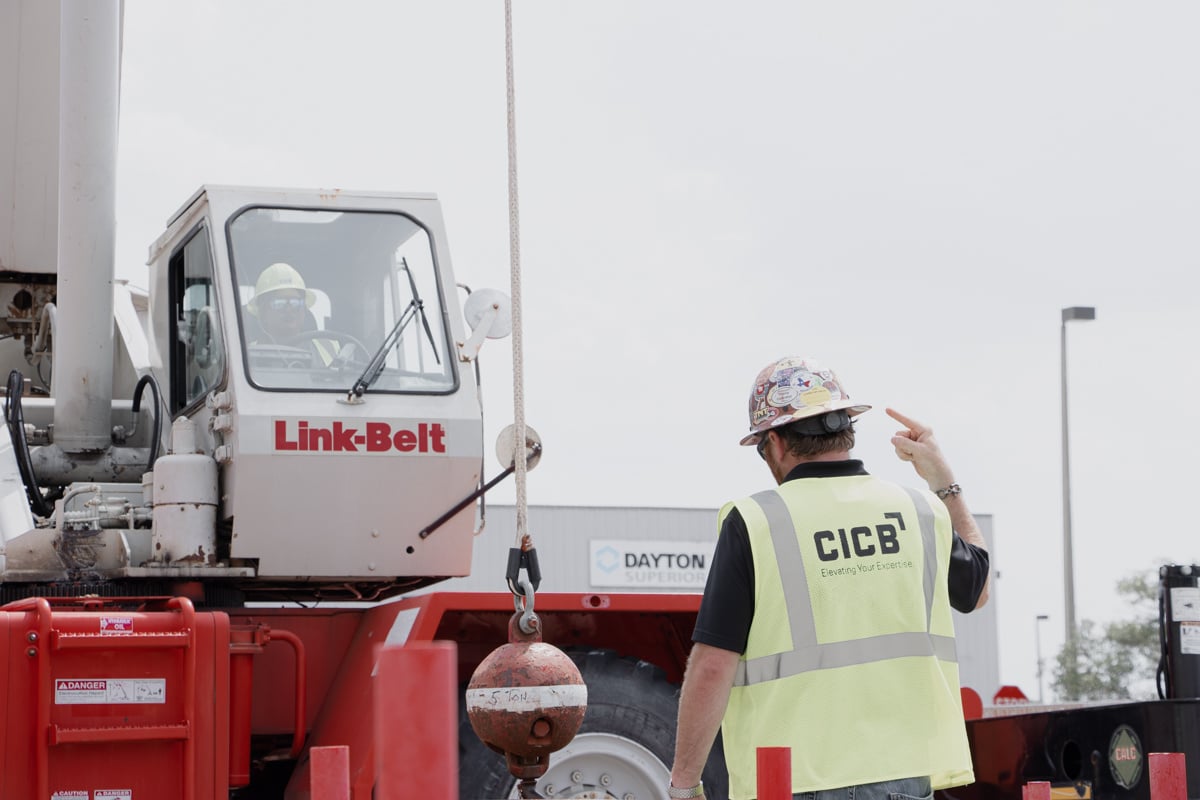
The Importance of Proper Communication
It can be confusing on job sites when you have multiple projects going on and even more confusing when you add a crane into the mix. Let us look over why knowing the proper signals and communication in crane operation is essential.
There are many scenarios where crane operators cannot see certain hazards. Some of these hazards can seem common, like distances from a building, personnel in the lift area, and even the flow of traffic on the job site. For these reasons, it is important to have a second set of eyes for the operator.
Signalperson Compliance – OSHA Training Requirements
OSHA criteria for how signalpersons must be trained in the 29 CFR 1926 Subpart CC. In 1926.1428 specifically, OSHA mentions that employers must ensure employees meet the necessary qualification requirements through two options: a third-party qualified evaluator or an employer's qualified evaluator.
The personnel in training must know and understand all signals they will use during the lift, plus how the equipment will react before and after the signal is given. Understanding the dynamics of the movements of the crane and load is critical. This way, when the signalperson gives a signal, they know how and when the crane and load will react. Knowing the crane's limitations and characteristics will improve the lift's safety by assuring the signal person and operator are on the same page.
If working near power lines, the employer must train all personnel in accordance with the 1926.1408. This way, personnel can be aware of avoiding possible electrocution.
When is it Required to use a Signalperson?
So, when is a signal person required? Under the 1926.1410 section d, if there's a possibility of the crane, load, or load line coming into contact with a power line, a dedicated spotter is essential. This dedicated spotter, who must have the same training as a signal person, is always in direct contact with the operator, ensuring the safety of the operation.
Other reasons for using a signalperson include blind lifts, the landing area being too far for the operator to judge, below-grade lifts, lifting personnel, and multi-crane lifts.
Signalperson Compliance Requirements
All the hand signals that shall be used come from the B30.5 and are under OSHA 1926 Subpart CC Appendix A. These hand signals must be used and can only be replaced by more effective signals. Special signals are also allowed to communicate actions that don't have a signal specified by the standards.
Prior to each lift, the signal person, operator, and lift director must meet to discuss communication. They should discuss and agree on the type of signals to be used for the lift. This includes communicating any special signals not specified in the standards. OSHA mandates that a signal chart be prominently displayed at the lift site for everyone's reference.
Using Voice Signals and Devices to Communicate with Crane Operators
What if hand signals are not feasible? Well, you can use voice signals in place of hand signals. Now, in saying that, there is a proper way to use voice signals and other devices to communicate with the operator.
Let us start with the devices. You have hard lines that are directly connected to the operator station and experience no interference from lost signal or someone else jumping on the line.
With the advances in technology, you also have cell phones. A caveat to these is that the operator must use a hands-free system when using this method and that connection issues must be accounted for to avoid losing communication.
Hand radios can also be used. Remember when using the hand radios the signal person and operator must have a dedicated line, and you should test the radios at every location the load will move too.
The Voice Signal Communication Method
Regarding properly relaying voice signals, you must use the specified dialogue to avoid confusion. There are three elements to a voice signal:
Element 1: Function and Direction
Element 2: Distance and or Speed
Element 3: Function Stop.
Voice signals must be given from the perspective of the operator. When done correctly, this can be a simple way to convey signals. The voice signal commands must be constant during the operation. Here are a few examples:


Ensuring Safe Signalperson Practices for your Team
If a prospective signalperson is determined not to understand the proper signals, they must be reevaluated to determine if they are qualified to guide lifts. These are just some of the outlines for signal persons. Always remember to check the OSHA regulations and company guidelines on when to use a signal person.
Contact CICB for help qualifying personnel and establishing compliant signalperson practices in your organization.
About The Author
 Jeff Palacios is a Senior Instructor and Inspector at CICB. After having attended CICB classes for 4 years, he decided to use his past experiences along with his teaching and coaching background to educate and inform our students. Jeff graduated from Texas A&M University-Kingsville with a degree in Kinesiology and has over 18 years of experience in HSE and rigging operations. His goal is to create a safer working environment and culture by making sure all his students have all the necessary and critical information to make important decisions on the job site.
Jeff Palacios is a Senior Instructor and Inspector at CICB. After having attended CICB classes for 4 years, he decided to use his past experiences along with his teaching and coaching background to educate and inform our students. Jeff graduated from Texas A&M University-Kingsville with a degree in Kinesiology and has over 18 years of experience in HSE and rigging operations. His goal is to create a safer working environment and culture by making sure all his students have all the necessary and critical information to make important decisions on the job site.





